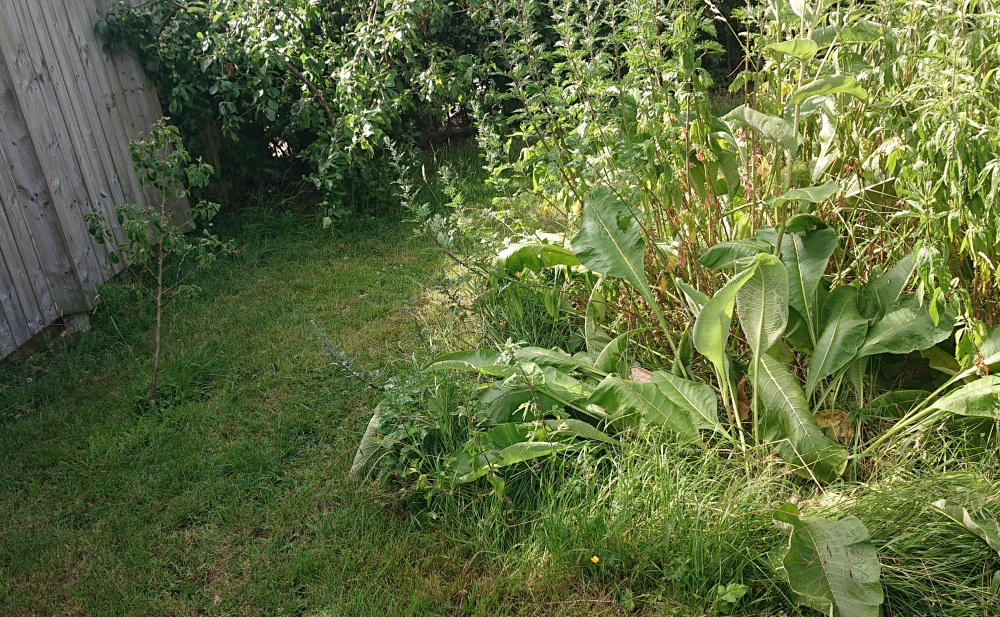This Forum will close on Wednesday 27 March, 2024. Please refer to the announcement on the Discussions page for further detail.
What wildlife in particular can I hope to attract with this setup?
On the left side of the picture, you can see the pear tree I posted about that had a sawfly on one leaf of it. Plus, don't let the picture deceive you, the way the picture has been taken makes it look smaller than it really is.
That aside, what wildlife in particular is likely to take an interest in the pear tree and the overgrown stuff on the right? Within days of the pear tree getting planted, bird poop could be seen on the leaves, although I've never actually seen a bird resting on it, I've seen blackbirds hop across the grass to the right out of shot of the picture as well as a robin, but no birds actually sitting on it's branches.
I've been told of a woodpecker in the area, do these take any interest in particular in fruit trees?
It is still early days for the pear tree, as it was only planted on the 27th April this year. But once it starts flowering, am I likely to see the bees and the butterflies take an interest in the tree? Will any squirrels in the area be very likely to take an interest in the tree before it has grown anything more than flowers?
Also, the overgrown stuff, will the bees, birds and butterflies be likely to show any interest in it and could it make a cosy sanctuary for hedgehogs?
(It should also be noted that the overgrown stuff is to be trimmed soon, although not completely removed as amongst it is a young silver birch tree).

That aside, what wildlife in particular is likely to take an interest in the pear tree and the overgrown stuff on the right? Within days of the pear tree getting planted, bird poop could be seen on the leaves, although I've never actually seen a bird resting on it, I've seen blackbirds hop across the grass to the right out of shot of the picture as well as a robin, but no birds actually sitting on it's branches.
I've been told of a woodpecker in the area, do these take any interest in particular in fruit trees?
It is still early days for the pear tree, as it was only planted on the 27th April this year. But once it starts flowering, am I likely to see the bees and the butterflies take an interest in the tree? Will any squirrels in the area be very likely to take an interest in the tree before it has grown anything more than flowers?
Also, the overgrown stuff, will the bees, birds and butterflies be likely to show any interest in it and could it make a cosy sanctuary for hedgehogs?
(It should also be noted that the overgrown stuff is to be trimmed soon, although not completely removed as amongst it is a young silver birch tree).

0
Posts
You can then decide how to attract them to your garden - bird feeders, nest boxes, a natural pond, access for the likes of Hedgehogs ,log piles and other "hidey holes" flowering plants which will attract insects and so on.
Also have a look at the Wildlife Gardening thread on here to give you further advice
In the sticks near Peterborough
Gardening in Central Norfolk on improved gritty moraine over chalk ... free-draining.